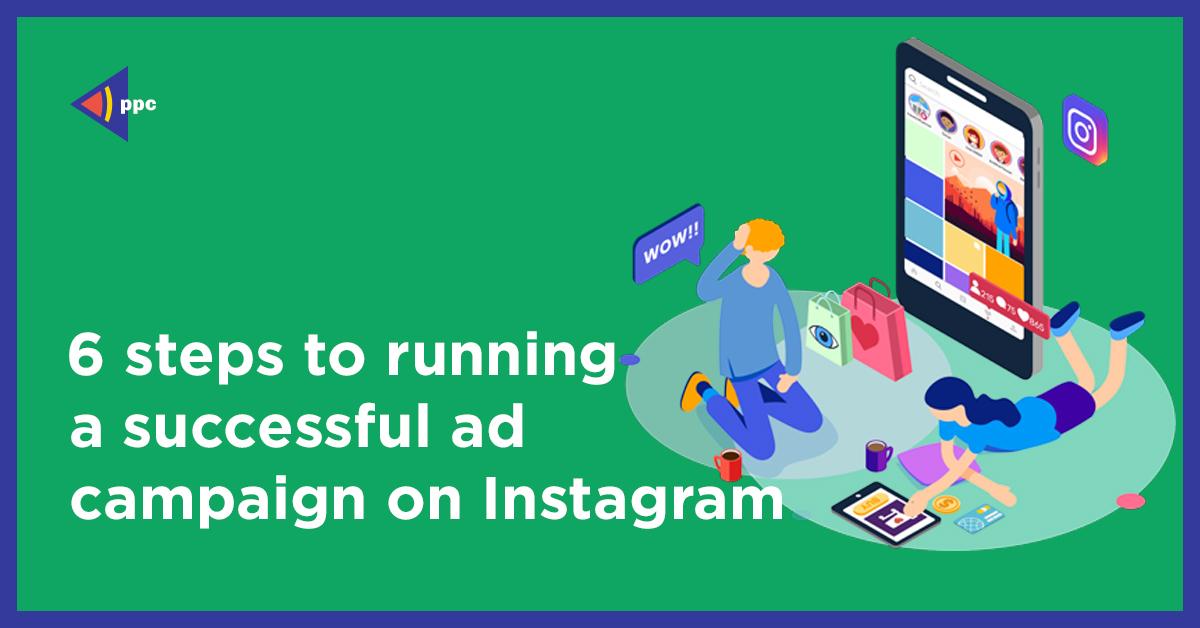6 steps to running a successful Instagram ads campaign
If you’re looking for new methods to improve your Instagram approach, consider including Instagram ads in your strategy.
While this strategy necessitates some investment, there are numerous reasons for firms to give it a shot. Every month, over 1 billion people use Instagram, with the average user spending 53 minutes per day looking through the platform, and you want your company to be visible to them.
We’ve got you covered with this tutorial, whether you’re new to Instagram marketing for your business in general or just getting started with Instagram advertisements.
Continue reading for an overview of Instagram advertising, including why it’s a good approach for your business and how to make your first ads.
What exactly is Instagram marketing?
Following its acquisition by Facebook in 2013, Instagram began giving ad slots to select businesses. It developed quickly after they extended Instagram advertising to all businesses in 2015, and by 2017 it had surpassed 1 million advertisers.
Instagram advertising is administered through Facebook’s Ads Manager, which gives marketers a variety of targeting options as well as the ability to generate ads for both platforms at the same time. Our agency provides professional advertising services in social media and paid advertising.
Advertising that appears in your audience’s feed as well as Story ads that play in between user Stories when users tap from Story to Story is available for Instagram-only ads.
Why should you invest in Instagram ads?
Organic social media techniques may appear to be cost-effective at first glance, but they take time, need a lot of trial and error, and can only get you so far when dealing with constantly changing social media algorithms.
This is why focusing on a social media plan that includes both organic and paid techniques is critical. You get the best of both worlds this way. You’re actively connecting with your audience and uploading content to your Instagram feed, but you’re also using paid ads to reach out to an even bigger audience who may not yet be aware of your business.
Instagram advertisements are a terrific method to show off your product because it’s a visual platform, and with Instagram shopping, you can make it easier than ever for them to convert to consumers straight away.
What does it cost to advertise on Instagram?
The cost of Instagram advertising is determined by a number of criteria, including the mobile device you’re targeting, demographics, the day of the week, and whether your ad is running during a major televised event.
It all boils down to your target audience, which is why knowing your Instagram demographics is so vital.
The ad’s placement is another factor that influences ad pricing. While Facebook’s right column advertising are the most expensive, Instagram feed and Story advertisements are among the most cost-effective, with CPCs ranging from $0.80 to $1.30.
So, how can you work this into your existing marketing budget? It’s critical to stay focused on your year’s main goals and objectives, and only spend money on marketing and initiatives that benefit your bottom line.
Spend money on posts and content that you know to perform well organically. Test everything to see what works best, then devote the majority of your ad budget to it. Make a point of measuring your ad’s success and noting anything that didn’t go as planned.
How to Make Ads on Instagram
As previously stated, you may create Instagram ads directly from Facebook ads management. This makes it simple because you can manage both your Facebook and Instagram advertising in one location.
Log into your Facebook account, go to your ads manager, and create a new campaign to begin designing your first Instagram ad.
1. Decide on your ad’s goal.
After you’ve created a new campaign, the first step in generating Instagram advertising is to decide on the goal of your ad.
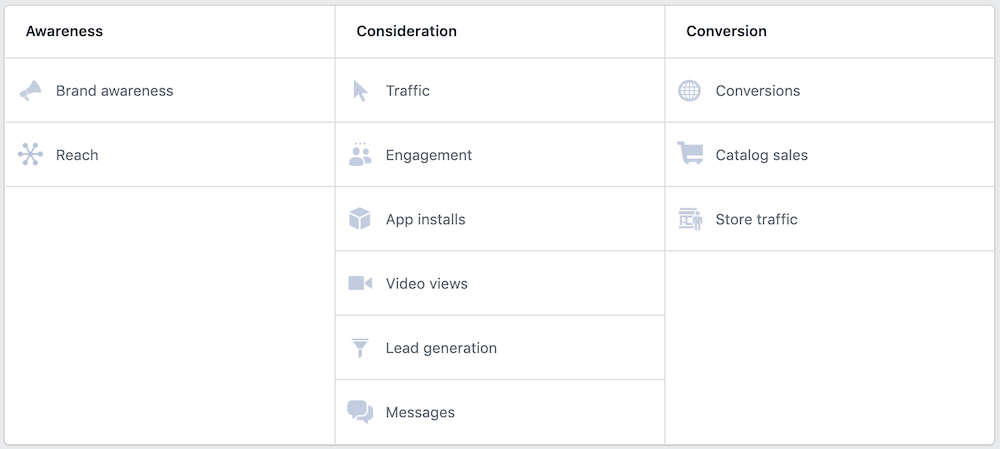
There are numerous options to choose from, which are divided into three categories: awareness, consideration, and conversion. There are a variety of ad types to pick from, including:
- Brand awareness: This is a great way to target users who will interact with your ad and raise brand awareness.
- Reach: Brands who want to get their adverts in front of as many people as possible should use this option.
- Traffic: this is ideal if you want people to visit your website, landing page, or app.
- Engagement: If you want people to enjoy, comment on, or share your ad, you should make engagement your goal.
- App installs: Brands directing people to the app store to download or purchase apps should aim for this purpose.
- Video views: In-stream advertising highlights development, product releases, and behind-the-scenes footage to visually persuade consumers to watch.
- Lead generation: Are you just looking for folks that are interested in or intrigued about your brand? Set a goal for generating leads.
- Messages: This encourages customers to interact with your company in order to get answers to product questions, get help, or make purchases.
- Conversions: This target is great if you’re aiming for direct sales activities on your ads, such as submitting payment information or making a purchase.
- Catalog sales: This format is for brands to display products from their product catalogs (which must be set up in order to use this format), which then target their audience.
- Store traffic: This is ideal for businesses promoting several locations in order to increase in-store visitors.
Make an informed decision while deciding on a goal. Your ad will most likely be rejected if you choose an aim that doesn’t make sense, such as making a traffic ad for a video or a messages ad for an Instagram placement.
Furthermore, you don’t want to waste your ad spend by selecting an aim that isn’t relevant to the material you’re promoting.
2. Give your Instagram advertising campaign a name.
After you’ve chosen your ad objective, the screen will expand so you can give your campaign a name. Because this is the most effective approach to keeping track of your advertising in the Instagram ads manager, I strongly advise you to name each campaign with care.
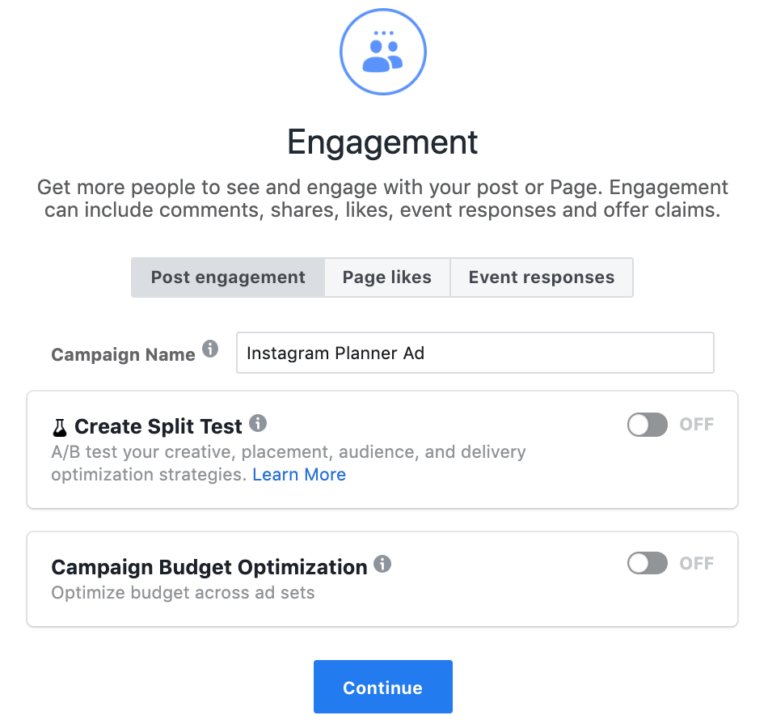
What are you trying to promote? Is this a once-a-month ad? Indicate which month you’re working on. Include the promotion’s name. Find a naming system that works for you and allows you to simply locate and monitor your adverts.
You can also start a split test ad and try out other variations while we’re here, as well as determine whether or not to optimize your budget across ad sets.
A split test, often known as an A/B test, allows you to compare several ad versions or ad sets, allocating the most budget to the ad that performs better.
Your ad budget will be automatically distributed throughout your ad sets thanks to campaign budget optimization. You have the option of automating this process or manually determining how much each ad set should spend based on your own testing and results.
3. Decide where you want your ads to appear.
Although the option to choose your audience is first on the screen, it’s a good idea to scroll through it and choose your Instagram-only placements instead. Because different ad features are accessible for different placements, it’s a good idea to get this out of the way first.
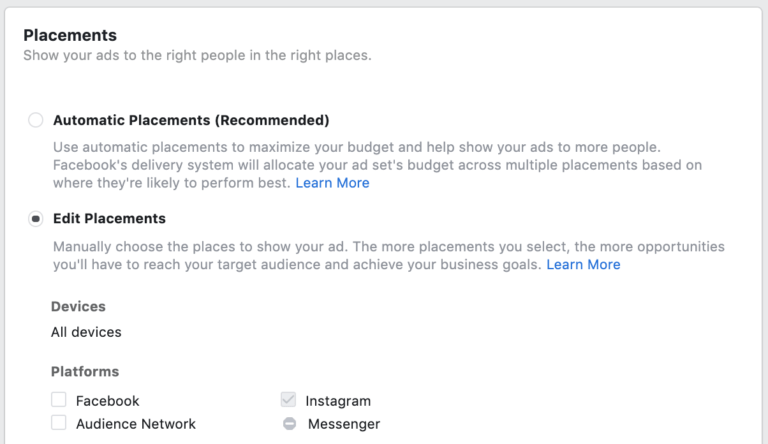
Simply uncheck Facebook and Audience Network from the platforms to ensure that your ad only appears on Instagram.
4. Determine who you want to reach.
Now comes the fun part. You can delve into the deep gritty of Instagram advertising by targeting your audience.
You don’t want to squander money by attempting to reach everyone. This is your chance to learn everything you can about your target audience’s demographics, hobbies, and behavior.
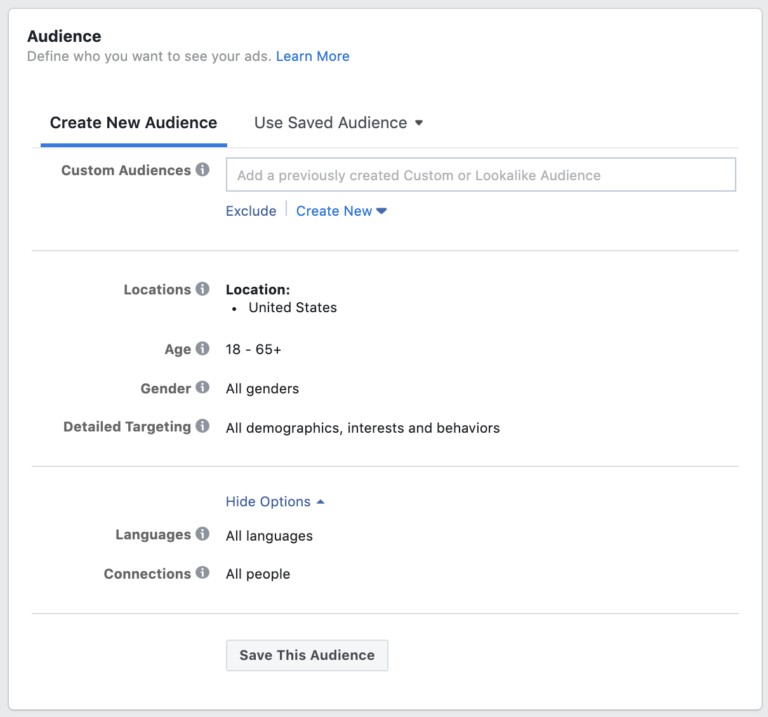
In the advertising manager, you may target the following audience types:
- Location: Choose or exclude audiences based on very specific locales, such as postal codes and addresses, or vast areas, such as global regions or countries.
- Age: Select your specific age range (ranging from 13 to 65+).
- Gender: For your advertising, you can choose between all genders, males or women.
- Detailed targeting: Three subcategories have been established:
Based on life choices, jobs, and education, demographics allow you to include or omit people.
Users are filtered by their interests based on the pages they like, the activities they participate in, and the topics they are interested in.
Purchases, activities, and vacation plans are all targeted by behaviors. - Languages: Only if you’re targeting people who speak a language that isn’t widely spoken in that location.
People who have previously linked to your app, event, or Page: Select users who have already connected to your app, event, or Page. - Connections: You can also make bespoke audiences depending on the pixels you’ve placed on your page. Users that have visited your website, or a lookalike audience of persons with comparable habits and interests, will be included.
5. Establish an ad budget and timeline.
When it comes to budgeting and scheduling your Instagram advertisements, you have complete control over when and how much will be spent.
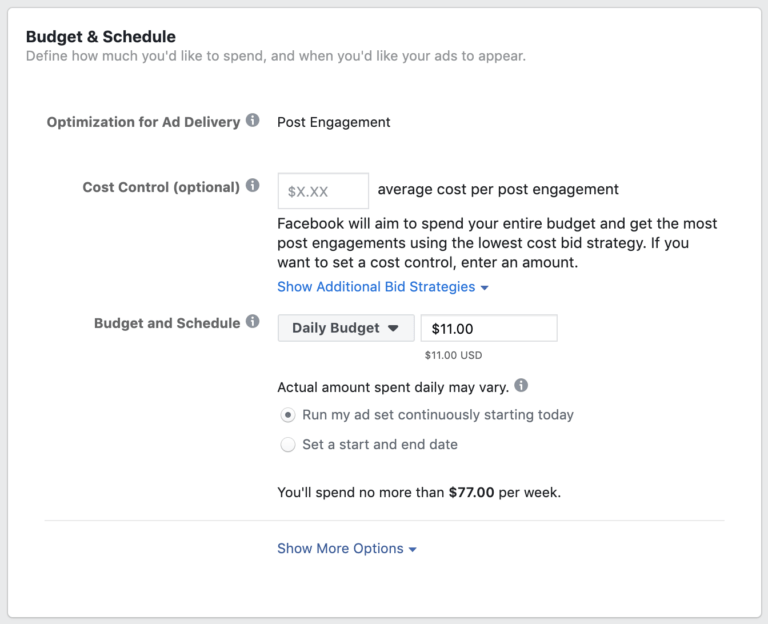
First and foremost, you must pick between a daily and a lifelong budget. Daily budgets allow you to run your adverts eternally while spending up to your daily budget (you can still select start and finish dates), whereas lifetime budgets allow you to run them for a specific period of time.
You can specify a precise schedule for your adverts to run if you choose a lifetime budget. Maybe you only want them to air on weekdays or weekends. You can specify the days and times when your adverts are shown to your target audience manually.
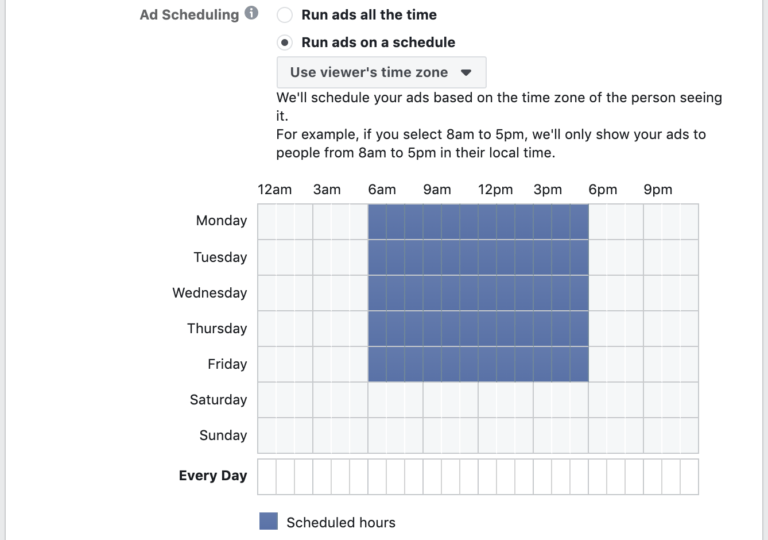
6. Select an Instagram ad format.
Click continue to return to your ad creation dashboard once you’ve finished the last three stages. You’ll submit your content, write your ad copy, and publish your ad here.
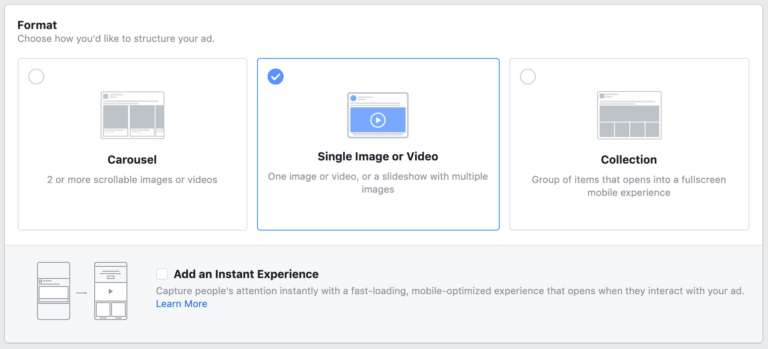
Different formats are available depending on the ad aim you selected at the start of this article, however, the following are the most common Instagram ad formats:
- You only have one image to work with photo advertising, so make it a nice one.
- Carousel advertising allows consumers to scroll horizontally through a series of images or videos on their mobile devices.
- Users can buy things directly from the ad when they see a collection ad.
- Video commercials are short video segments that can last anywhere from 3 to 60 seconds.
- Ads in between user Stories: These can be photos or videos that appear as consumers tap through the Stories they follow.
Start promoting on Instagram right now.
Are you ready to start making Instagram advertising on your own? We can’t wait to see what you’ve come up with. Or contact us to develop your winning Instagram advertising stategy.
